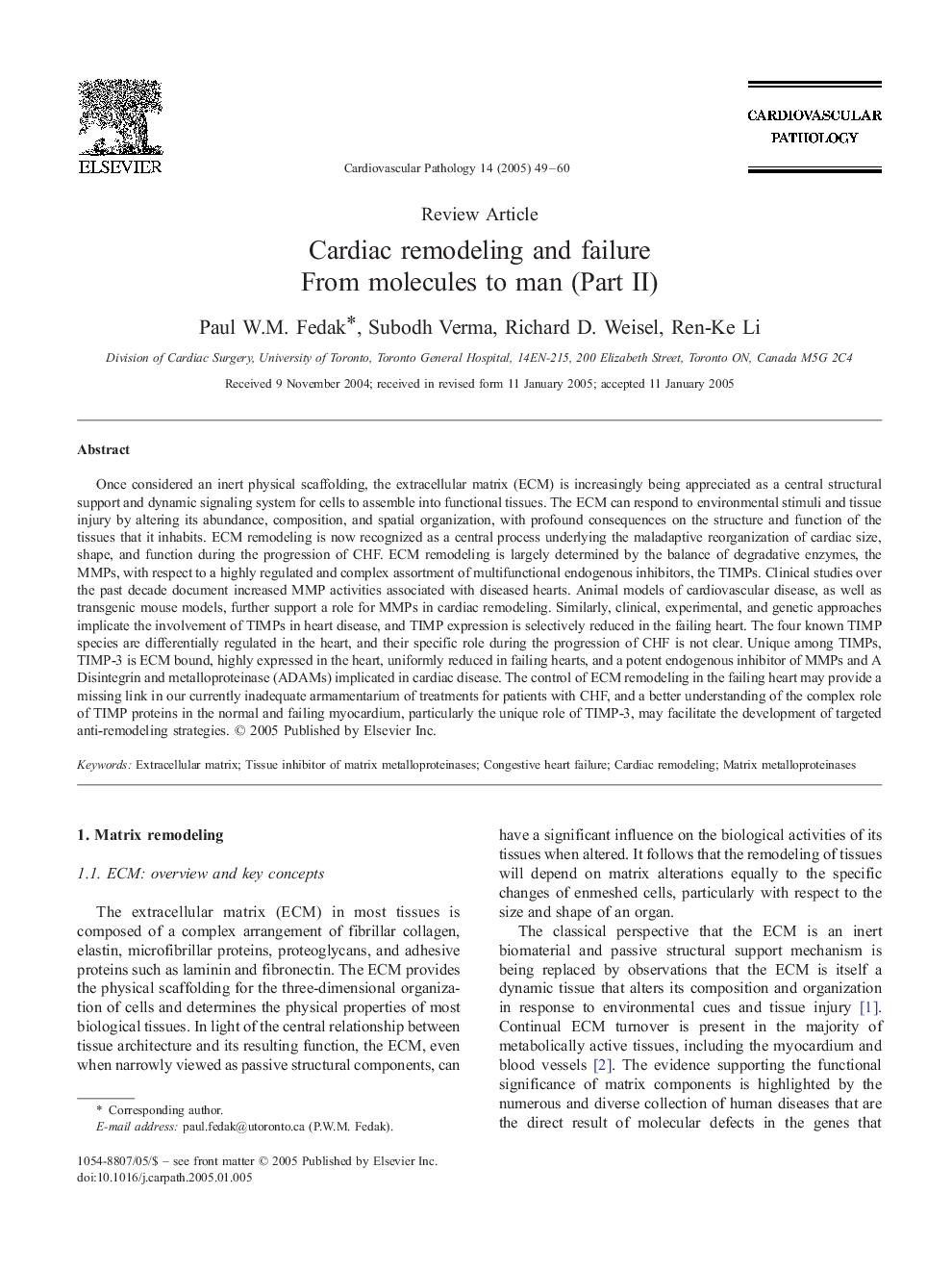| Article ID | Journal | Published Year | Pages | File Type |
|---|---|---|---|---|
| 9160326 | Cardiovascular Pathology | 2005 | 12 Pages |
Abstract
Once considered an inert physical scaffolding, the extracellular matrix (ECM) is increasingly being appreciated as a central structural support and dynamic signaling system for cells to assemble into functional tissues. The ECM can respond to environmental stimuli and tissue injury by altering its abundance, composition, and spatial organization, with profound consequences on the structure and function of the tissues that it inhabits. ECM remodeling is now recognized as a central process underlying the maladaptive reorganization of cardiac size, shape, and function during the progression of CHF. ECM remodeling is largely determined by the balance of degradative enzymes, the MMPs, with respect to a highly regulated and complex assortment of multifunctional endogenous inhibitors, the TIMPs. Clinical studies over the past decade document increased MMP activities associated with diseased hearts. Animal models of cardiovascular disease, as well as transgenic mouse models, further support a role for MMPs in cardiac remodeling. Similarly, clinical, experimental, and genetic approaches implicate the involvement of TIMPs in heart disease, and TIMP expression is selectively reduced in the failing heart. The four known TIMP species are differentially regulated in the heart, and their specific role during the progression of CHF is not clear. Unique among TIMPs, TIMP-3 is ECM bound, highly expressed in the heart, uniformly reduced in failing hearts, and a potent endogenous inhibitor of MMPs and A Disintegrin and metalloproteinase (ADAMs) implicated in cardiac disease. The control of ECM remodeling in the failing heart may provide a missing link in our currently inadequate armamentarium of treatments for patients with CHF, and a better understanding of the complex role of TIMP proteins in the normal and failing myocardium, particularly the unique role of TIMP-3, may facilitate the development of targeted anti-remodeling strategies.
Keywords
Related Topics
Health Sciences
Medicine and Dentistry
Cardiology and Cardiovascular Medicine
Authors
Paul W.M. Fedak, Subodh Verma, Richard D. Weisel, Ren-Ke Li,
